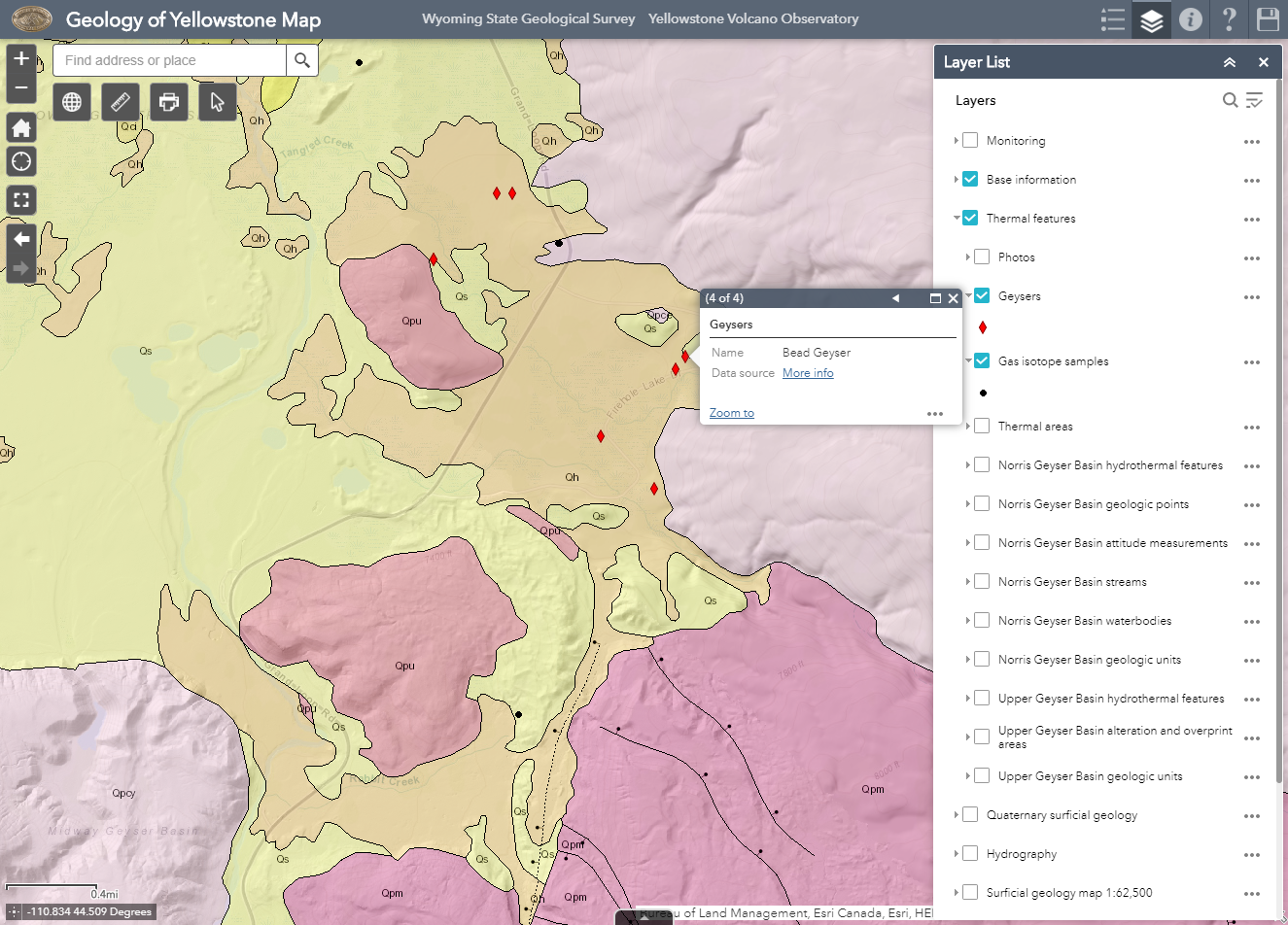NEWS RELEASE: Wyoming Geological Survey Launches Online Map Detailing the Geology of Yellowstone
Wyoming State Geological Survey sent this bulletin at 05/28/2020 09:43 AM MDT
DATE: May 28, 2020
******FOR IMMEDIATE RELEASE******
Media Contact:
Christina George
(307) 766-2286 x231
christina.george@wyo.gov
WSGS Launches Interactive Map Detailing the Geology of Yellowstone
The Wyoming State Geological Survey (WSGS) has developed an interactive map that will provide researchers and the general public an opportunity to view multiple geospatial datasets relating to the geology of Yellowstone National Park.
The map was developed in cooperation with the Yellowstone Volcano Observatory (YVO), of which the WSGS is a consortium member. YVO is composed of nine state and federal agencies and universities that provide timely monitoring and hazard assessment, contribute scientific understanding, and disseminate information to the public on the Yellowstone volcanic system.
The Geology of Yellowstone Map is a compilation of publicly available geospatial data from YVO partners and external sources. Links in the map direct users to the original data sources, where the data are free to download. The WSGS previously housed some of this data on its website and provided a downloadable ArcGIS .mxd file for users to view the data. The interactive map is an update and expansion of these earlier services and will offer a more accessible platform, with users only needing an Internet connection to view the data.
“Yellowstone is one of the most celebrated and studied geologic systems on the planet, and there is a wealth of geospatial data that has been published in the region,” says WSGS geologist James Mauch. “We’ve compiled much of this data into a single map with an easy-to-use interface. We hope this map becomes a go-to resource for researchers and the general public to digitally explore Yellowstone’s geology and geography.”
Users can interactively pan and zoom to areas of interest of the map, search for specific locations, and turn layers on and off. Clicking on a feature leads to a pop-up window with more information, which can also be accessed in each layer’s attribute table. A key feature of the map are the Layer Explanation and Data Sources menus, which provide users with links to the original data source for each layer.
The map includes several layers of bedrock and surficial geologic maps published by the U.S. Geological Survey and National Park Service. Users will also find layers containing information on Yellowstone’s geology, thermal features, hydrography, active monitoring programs, geomorphology and geologic hazards, and basic geography. The WSGS plans to make periodic updates and additions to the map with current monitoring data and as new studies and information are released.
“Our online map series continues to provide a single source for geologic information. We have done the work of researching, acquiring, and organizing available data, and we host it in a format the public can access without technical software,” says WSGS Director and State Geologist, Dr. Erin Campbell. “Yellowstone is one of the largest tourist attractions in Wyoming, and this map not only provides a cohesive source of data for scientists, but it is a tool visitors can use to plan their trip. Users can locate roads, trails and rivers, assess elevation, and explore the volcanic features through their web browser.”
The Geology of Yellowstone Map is the sixth online map developed by the WSGS. Others are the Oil and Gas Map of Wyoming, Geochronology Map of Wyoming, Groundwater Atlas of Wyoming, Mines and Minerals Map of Wyoming, and Wyoming Geologic Hazards Map. Each of these maps are free to access and make Wyoming geologic data easily available to the public.
The WSGS welcomes suggestions on how to improve the Yellowstone map going forward and encourages inquiries from researchers who are interested in displaying their data on the map. Questions and comments can be directed to wsgs-info@wyo.gov.

Caption: Screenshot of the Geology of Yellowstone Map zoomed into the Lower Geyser Basin.

